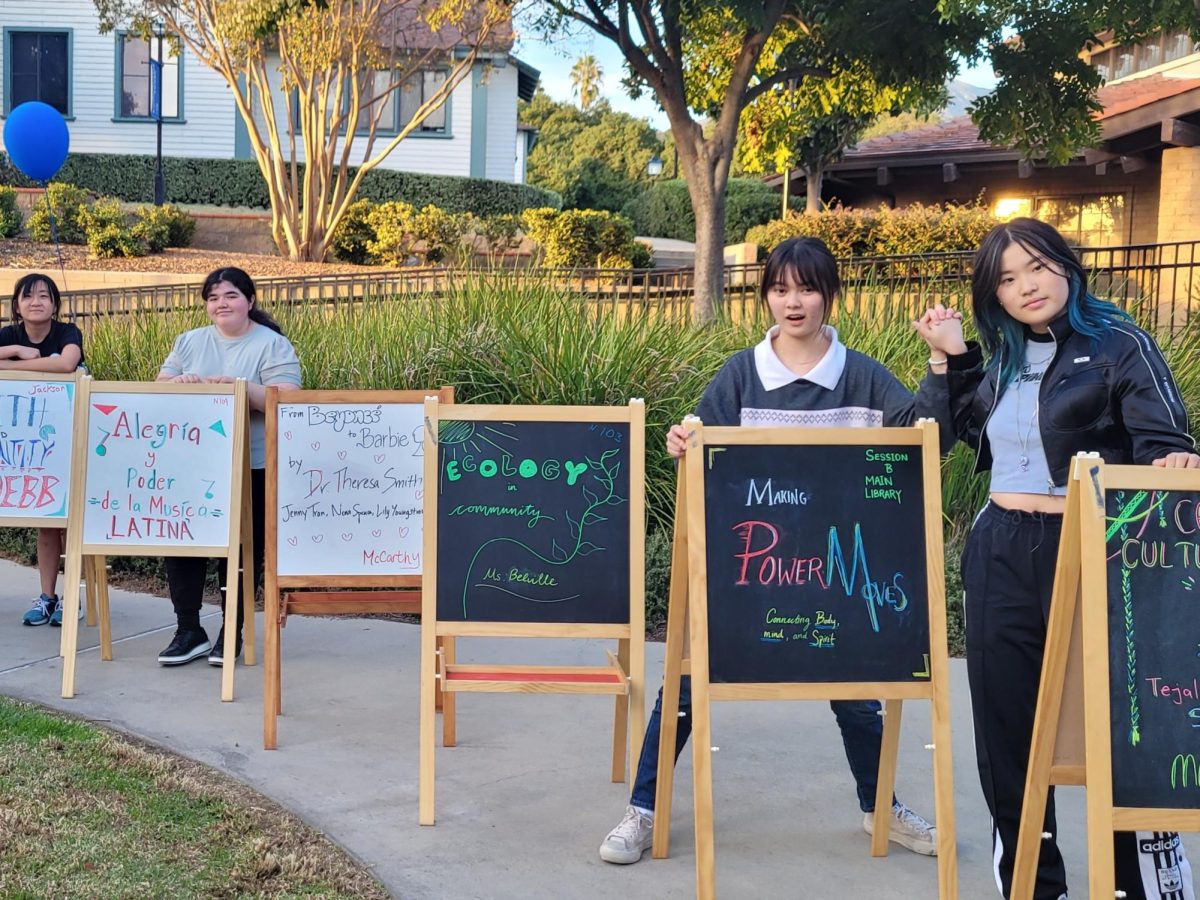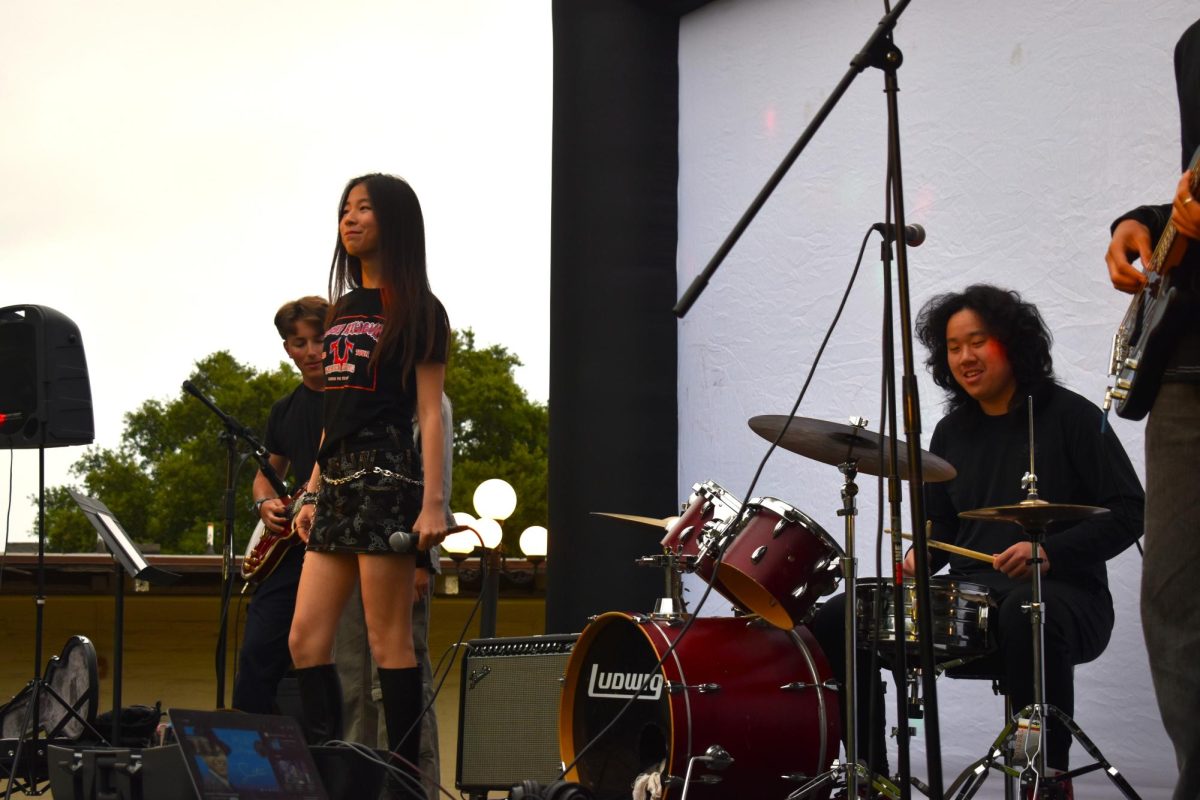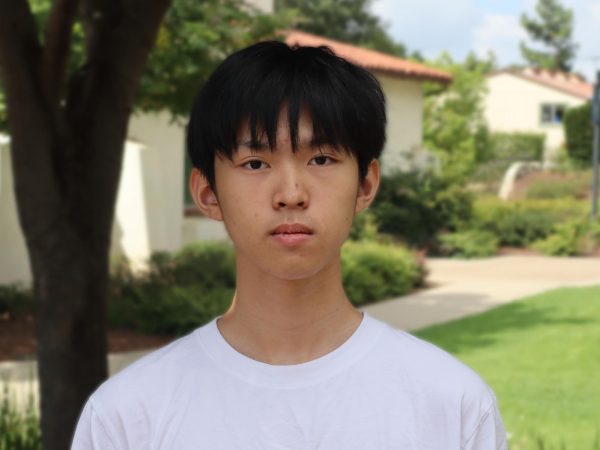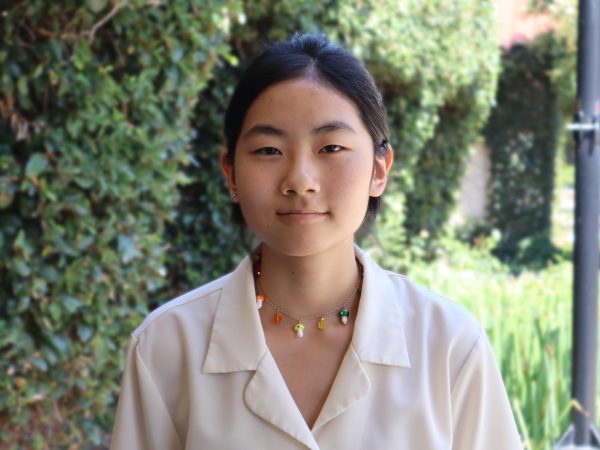The Webb community welcomed its first-ever Diversity Symposium on Wednesday, November 8th. Instead of attending classes and routine programs such as chapel or advisory, students and faculty engaged in various workshops ranging from informational, discussion-based sessions to hands-on activities.
Centered around the theme of “Joy and Power,” this diversity symposium encouraged questions of identity and empowerment through a diverse range of topics and activities.
“We wanted to do things that were focusing on our joy and power, things that people felt good about doing,” said John Choi, Director of Equity and Inclusion. “And of course, it was [also] about inclusion and belonging and those kinds of things.”
Keynote speech
The symposium kicked off with keynote speaker Dr. Lyla June Johnston, who according to her website is an “Indigenous musician, scholar, and community organizer of Diné (Navajo), Tsétsêhéstâhese (Cheyenne) and European lineages.” In her speech, Dr. Johnston used beatboxing and original music as well as a more typical speech style to discuss the legacy of Indigenous peoples in America and questions of forgiveness and reconciliation with European colonizers.
“It was Indigenous People’s Month, and we wanted the symposium to tie into that heritage,” said Gretel Barsotti, Assistant Director of Equity and Inclusion. “We know that Webb hasn’t always done the most with the Indigenous peoples, although I think it’s tried before, but it’s an ongoing partnership that we’re trying to do.”
Tying together music, speech, and her identity as both a member of the Tsétsêhéstâhese Indigenous nation and a person of European descent, Dr. Johnston used her unique perspective to both understand and reconcile both oppressed and oppressor.
“We thought it would be something fresh and new, particularly Lyla’s perspective on it seems really unique. It’s honest, but also really hopeful. The theme of our symposium was ‘Joy and Power’, and she seemed to embody that. And especially when she came with her beatboxing and her music and her message. Again, she didn’t sugarcoat things, but it was very joyful in her delivery,” Ms. Barsotti said.
In her speech, Dr. Johnston explored both the impact and legacy of Columbus’s massacre of Indigenous nations living in Turtle Island — a.k.a. the Americas — and prompted students to question the history of the land they occupied.
At the same time, she presented a unique perspective on the role of the European colonizer in the history of their brutal conquest: both understanding the war trauma Europeans endured in their own countries and learning to appreciate her own identity as a person of European descent.
“I really liked how she was incorporating culture and her stories into music,” Katharine O’Hearn (’24) said. “I also really liked how she opened it up to the room and was understanding, especially with questions at the end. I could tell her main goal was to educate us not just on her own culture, but also on all the other Indigenous peoples who are unmentioned and unrecognized.”
In her music, Dr. Johnston employed her singing and beatboxing skills to sing “All Nations Rise,” a piece she wrote exploring self-empowerment and appreciation of both her identities.
Individual workshops
Following the keynote speech, students dispersed into their previously designated workshops — ranging from conversations about Affirmative action to learning about and using Yoga to meditate on identity. Dr. Johnston also hosted her own small workshop, which further explored the ideas she presented in the morning.
With the Diversity Symposium, Webb aims to broaden the concepts of diversity, equity and inclusion (DEI) through various creative workshops lead by various faculty and students on campus, as well as sourcing nonprofit organizations to bring forth new perspectives on identity and self.
Harnessing Our Differences to Heal the World
Dr. Johnston’s small workshop, Harnessing Our Differences to Heal the World, was comprised mostly of a Q&A style discussion between Dr. Johnston and the students attending, with Dr. Johnston elaborating on some of the topics she discussed in the morning session and students asking personal questions about how to reconcile their own conflicting identities.
Her workshop also included some elements of presentation, such as an image of Henry Ford’s melting pot and a google autofill of “do Native Americans…” to point out harmful stereotypes about Indigenous peoples.
“Overall, I thought it was very informative, because she brought a lot of historical elements into the talk I hadn’t heard before,” Cathy Hou (’24) said. “I enjoyed it, but it wasn’t very interactive.”
While Dr. Johnston’s workshop was largely of spoken discussion and presentation, other workshops used activities to explore the prompt of diversity, equity, and inclusion.
Painting with Coffee
A popular workshop was Painting with Coffee, which prompted students to use instant coffee, water, and a small piece of paper to paint any image that spoke to them. Students were provided with example portraits as inspiration.
The space provided time for self-meditation and introspection, allowing students time to experiment with their artistry and think about their identity.
“I wasn’t too sure of what to expect upon arrival, but the company who hosted the workshop had the intentions to promote mental health awareness and well-being through stress-relieving activities that involved creativity,” Saraya Chigoji (‘27) said. “I had a lot of fun having the freedom to participate in the painting while in a comfortable environment with friends as the instructors provided guidance on how to create paint with instant coffee.”
Brown Alliance, Brown Joy
Other workshops were run by students, such as the Brown Alliance, Brown Joy workshop, run by Jackie Shugert. It was a conversation-based workshop which discussed the experience of being brown in America. Students were prompted to write about their experiences of colorism and racism on small pieces of paper, which were placed in the center of a circle and shared anonymously.
“I was really touched to see underclassmen connect with the topics we were bringing up,” said Jackie Shugert (‘24), leader of the Brown Student Alliance workshop. “I was so excited to see how they were engaging with the conversation — discussing colorism, those harder issues, and at the same time feeling uplifted and empowered people within our different identities and skin tones.”
The workshop also featured a POC comic book artist who created a comic strip about his experience in the publishing industry with editors who asked him to lighten the color of his characters’ skin.
“One of the biggest charges that we did with the symposium is we offered all affinity groups to have a workshop to say: ‘When you have these closed-door meetings and you have conversations about your identity, what do you wish Webb knew about that identity?'” Ms. Barsotti said. “‘What do you want to share with the community?’”
Mend M.E.
A more activity centered student workshop was Mend M.E., led by Dr. Greco and the M.E. affinity group — an affinity for multi-ethnic, multi-racial, and racially ambiguous students — which had students writing parts of their identity on porcelain plates, breaking them, and reforming them into an art piece. The art pieces were later displayed in the Art Café.
Reflection and future plans
Moving forward, Webb’s DEI office hopes to include more workshops on both LGBTQ identities and individuals with disabilities, as well as outsourcing more external sources to come and do workshops.
“I would love [to include] the pieces that people thought were missing,” Ms. Barsotti said. “I would love to fill [students] in with workshops and different educational opportunities.”
The symposium received positive feedback over its various creative workshops with involvement from outside-organizations, faculty and students. The outlook for next year’s symposium is promising: Webb’s first Diversity Symposium has been a successful venture into exploring the many dimensions of DEI.










